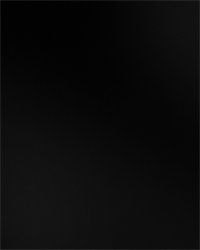interview • brendan threadgill
i heart photograph: talk a bit about how you arrived at the physical/technological process behind making this image.
brendan threadgill: the process that generates these images is very straightforward: using a flatbed scanner, the surface of a blank, processed film negative is scanned at a high resolution. once in photoshop, the negative is inverted to make a positive and the autolevels function is applied. the resulting image is an image of the surface of the negative and the scanner, “corrected” by the application. the aesthetics of the image, the colors, values, contrast, etc., are determined completely by the automated algorithm with no intervention or manipulation on my part. what we see is the dirt, chemical stains, fingerprints, and other signs of use, exaggerated and distorted by a predetermined idea of what pictures should look like.
i.h.p.: this image and the others in the series suggest a lineage of "negativeless" photography, from man ray through james welling. what's at stake for you in the balance between abstraction and referrentiality in the image?
b.t.: with these images there is less of a balance and more of a tension between the photograph as icon and the photograph as index. it’s a process of examining the medium itself, the substrates and technologies that form and transmit images. what we get in the end is an index of use that plays with the received form of gestural abstraction, informing the larger context of investigation and visual pleasure. what’s at stake is an understanding of how the physicality of photography informs its iconic status and transmits ideas of knowledge, progress, and beauty.
interview is a weekly column by nicholas grider that appears each tuesday on i heart photograph.





























